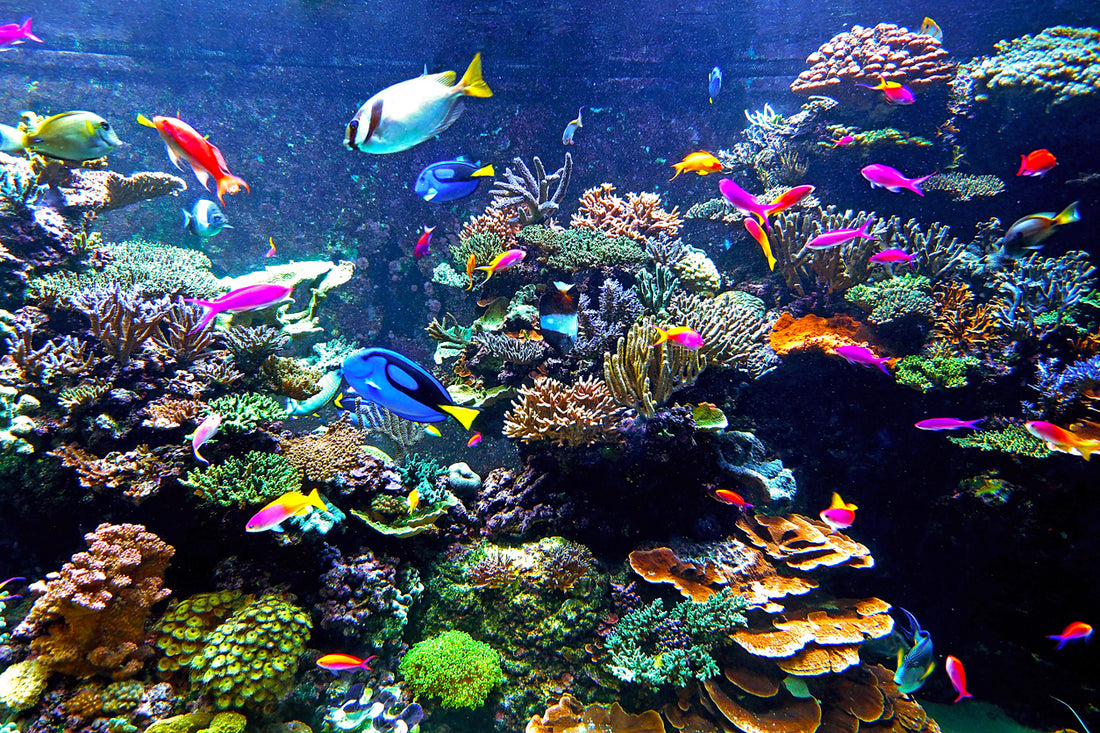
Keeping Aquariums with Diverse Fauna
Table of Contents
Keeping Aquariums with Diverse Fauna
Starting an aquarium — even a small one — is an exciting process. You’ve seen pictures online, you’ve checked out options at local pet stores or aquarium supply stores, and perhaps even envied your friends’ aquariums. The benefits are seemingly endless, as well, from unique and colorful fish and the allure that a tank adds to any room, to the cool stuff you can get for your tank to give your new friends a decorative home. But before you go out and purchase a tank to start your own aquarium, you’ll need to consider aquarium fish compatibility, as well as answer an important question: how many fish can you put in your tank?How Many Fish Can I Put in My Tank?
A common question asked by beginners and even seasoned aquarium enthusiasts is, “how many fish can I put in my tank?” But the answer is a bit vague. A semi-solid rule of thumb indicates that you’ll need one gallon of water for every one inch of fish — but while this may work for many aquariums, it isn’t a uniform solution. A better method of sorting out how many fish you can keep is by first determining what size tank your space can comfortably accommodate, and then planning your fish accordingly. There are several sizes available within small, medium, and large categories.Common Aquarium Sizes
| Small Tanks | Medium Tanks | Large Tanks |
|
|
|
Factors That Impact Stock Capacity
Fish need a fair bit of room to swim around, and overstocking your tank won’t allow enough space for the ecosystem to function correctly. Overstocking can also lead to shortened lifespans, which defeats the main purpose of starting an aquarium in the first place! Here are a few things to keep in mind that can impact the number of fish you can keep:Filtration Systems
The more fish you keep, the better the filtration system needs to be in order to stay on top of waste, bacteria, and algae growth. Using a skimmer will trap a lot of the waste particles that float to the surface, but adding an ultraviolet (UV) light such as Aqua Ultraviolet’s Advantage Series can help by eliminating harmful bacteria, diseases, microorganisms, and other contaminants that can ultimately harm your fish.Plants & Lighting
Lighting provides your fish with oxygen in the water that enables them to “breathe”, but if your lighting is insufficient in comparison to the number of fish in your tank, this will be a serious problem. Similarly, any plants and other helpful organisms in your aquarium also require light for photosynthesis and to encourage healthy growth.Species Compatibility
Some fish species don’t do well with others of their own kind, while others don’t do well with others from different parts of the world. Territorial fish can be highly problematic in small tanks unless kept on their own or with others that have proven to be dormant. Using a larger tank can help, but it’s best to ensure that the fish you keep will get along and thrive together as part of a well-functioning ecosystem.Aquarium Fish Compatibility
Aquarium fish compatibility is crucial for the success of your aquarium. Here are a few things to keep in mind:- Younger fish are able to mingle well with a wider variety of other species over older fish, who may be less tolerant. Some good combinations might include the Apistogramma Dwarf Cichlid and Green Neon Tetra, the African Cichlids and Synodontis Catfish, or the Discus, Rummy Nose Tetra, and Cardinal Tetra.
- Food-wise, most fish are opportunistic. Keeping fish that are all around the same size will prevent them from trying to eat the others, especially if you have somewhat territorial fish such as the Tiger Barb, Flowerhorn Cichlid, Jaguar Cichlid, or Dwarf Pea Puffer.
Males can be more aggressive than females, again, especially with territorial species. By stocking your aquarium with a higher ratio of females to males, there will be less competition and a better chance for harmony (2-3 females per male is usually a good fit).
